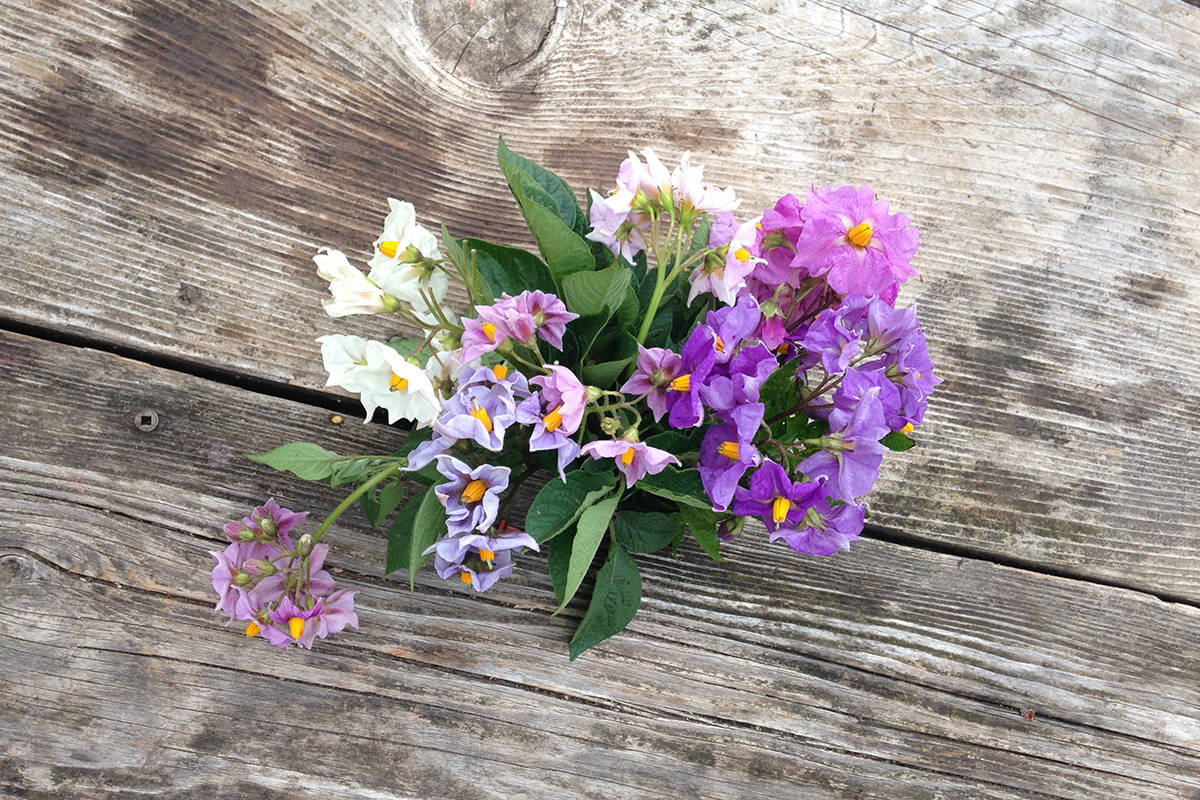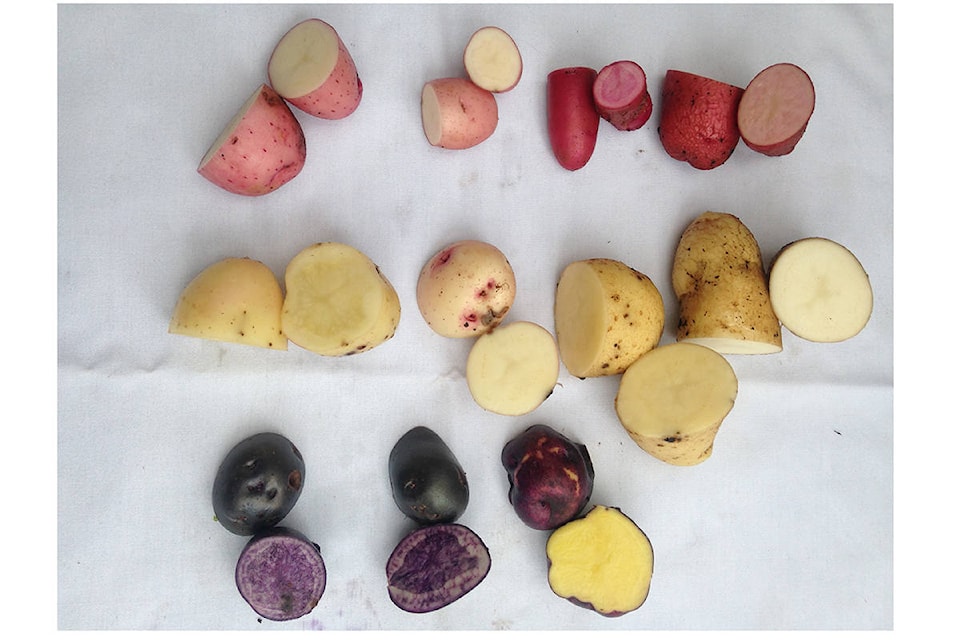Ever hear that to grow potatoes you just cut up any old tuber and plant the pieces?
Well, you certainly can plant tubers, though they’re far more productive if planted whole, but what about planting potatoes by seed?
Growing potatoes from potatoes gives a genetically identical product, like cloning. It’s how registered and named potatoes like Yukon Golds and russets are so consistent. (Same for apples such as Granny Smith and Macintosh, by the way.)
But if you’re lucky enough to get a potato seed, the tubers that form will be a unique varietal.
Flash back to high school genetics, and you might recall how genetic data is stored in cells. Growing potatoes by planting tubers is a great way to produce more of the same, but to access the genetic diversity of potatoes (haven’t you always wanted to?) it’s the seeds you need.
Farmer Fiona Hamersley Chambers was given a satchel of potato seeds from South America four years ago, and has been having a blast growing unique varieties of potatoes on the sea bluffs at her Metchosin Farm since then.
ALSO READ: Student-harvested, sorted, packed seeds set for sale at Langford store
And since gardening has become exponentially more popular during the pandemic (Metchosin Farm seed sales skyrocketed last year), she’s encouraging people to try cultivating their own potatoes. Which means you get to name it too.
“It could be an Emma potato or a Ben potato,” she said.
It can be a great family or class experiment that teaches food growing and science methodology.
New gardener? Her best advice is to not be afraid. “It’s hard to mess this up. Plants want to grow,” she said. Start with foods your family likes to eat, such as cherry tomatoes, peas — or potatoes. “You’ll succeed right away and everyone will want to do more.”
For would-be potato inventors
Here are Hamersley Chambers’ tips for growing potatoes from seeds. Keep in mind it’s a two-year endeavour.
1. Sow the whole package of seeds with 4 cm spacing, either in pots or a tray of soil with a shallow covering of soil and wait for the first sprouts. Wait longer for the second set of leaves. Now the plants are ready for step two. Some seedlings will grow better than others. Pay attention to which ones seem more robust, which ones are happiest to grow in their new home.
2. Choose the 10 strongest looking seedlings and transplant them into individual 4” pots (assuming you don’t want 100 potato plants). Let them grow until they fill out the pots.
3. Do a final transplant into the ground or a bigger pot. Note different characteristics like leaf colour, stalk strength and the flowers. Each of these potato plants is a never before seen potato, so they’ll all be slightly different. Start mulling over some names for your baby potatoes.
4. In the fall when the plant dies back it’s time to harvest. Keeping each plant separate, dig up the tubers. Reserve the largest five potatoes from each and store them in a cool, dark place with layers of paper. Label them so you remember who’s who next year.
The smaller tubers are for eating! Try boiling, baking and frying each kind to see what works best. Do they taste good? What colour are they? Now is a good time to name them.
5. Next spring plant the reserved tubers. This year the plant will show its quality, and by planting tubers instead of seeds, you’ll be propagating your own in-house brand of potato.
You can skip ahead by buying a bag of one-year-old tubers at the Metchosin Farm plant stand. They sell potato seeds at metchosinfarm.ca.
ALSO READ: Little Free Plant Stands sprouting in Colwood
Do you have a story tip? Email: zoe.ducklow@blackpress.ca.
Follow us on Twitter and Instagram, and like us on Facebook.

